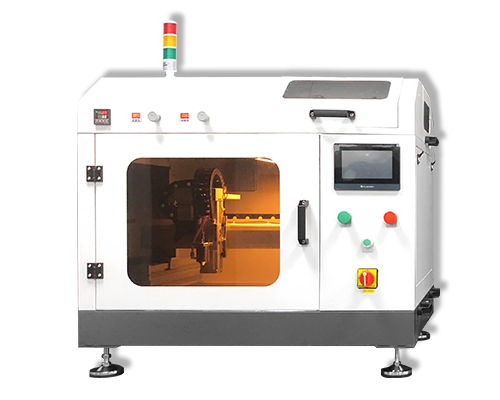Ultrasonic Spray Coating Glass Ceramics
Ultrasonic Spray Coating Glass Ceramics – Nano Coating – Cheersonic
In the vast field of inorganic non-metallic materials, glass ceramics, as a bright new star, are emerging with unique performance and advantages. Although glass, ceramics and glass ceramics belong to the category of inorganic non-metallic materials (or silicate materials), their microstructures are different. Glass is amorphous, ceramics are polycrystalline, and glass ceramics are composite materials combining crystalline phase and glass. Nowadays, many functional glass and ceramic materials have broken through the limitations of traditional silicates or quartz and expanded in the direction of fluorides, phosphates, etc. Glass ceramics also occupy an important position in the material world with their own characteristics.
Glass ceramics are a composite material of crystalline phase and glass phase made by high-temperature melting, molding, and heat treatment. They are mostly processed from glass, so they are also called microcrystalline glass. It cleverly combines the properties of glass and ceramics, and has excellent properties such as high mechanical strength, adjustable thermal expansion coefficient, heat shock resistance, chemical corrosion resistance, low dielectric loss, and low conductivity, showing great application potential in many fields.
Glass ceramics have good thermal shock resistance, optical properties, adjustable thermal expansion, corrosion resistance and chemical stability, as well as high hardness and high strength, making them very useful in many industries. In the field of biomedicine, castable glass ceramic restorations shine. It has the transparent properties of glass, and its hardness, transparency and light refractive index are very similar to those of tooth enamel. After adding a small amount of fluorescent agent, the restoration made is natural and realistic. Among oral restoration materials, its visual aesthetic effect is first-class.
In the electronics industry, glass ceramics are used as special substrate materials for electrical components. They are made of pure glass or glass slag by nucleation and crystallization (commonly known as LAS materials) with rare metal oxides as nuclear additives. Unlike common ceramic substrates, glass ceramic substrates have excellent thermodynamic properties and can maintain low resistivity and low power consumption even when the operating temperature exceeds 400°C. In the field of optics, transparent glass ceramics have good transparency due to their non-pores and glass phase. LOA2O3・SiO2 system microcrystalline glass ceramics with β・quartz as the main crystal phase have the characteristic of near zero expansion, making them an ideal material for astronomical telescope lenses.
In addition, glass ceramics have the characteristics of high strength, high hardness, strong corrosion resistance and low thermal expansion coefficient, which makes them suitable for making anti-aircraft missile warheads and radar covers in the aerospace and military fields; excellent dielectric and insulating properties help microwave oven panels in the field of electric ceramic microwaves, and promote the development of various functional glass ceramic materials.
Ultrasonic spraying technology plays a key role in the production and performance improvement of glass ceramics. When processing glass ceramics, traditional coating preparation methods have problems such as uneven coating and weak bonding force. The emergence of ultrasonic spraying technology has brought new solutions for optimizing the performance of glass ceramics.
Ultrasonic spraying technology is based on the principle of high-frequency ultrasonic vibration, which atomizes the coating into uniform and tiny particles and sprays them accurately on the surface of glass ceramics. In terms of improving optical performance, when glass ceramics are used in optical components such as astronomical telescope lenses, the uniformity and optical quality of the surface coating are extremely high. Ultrasonic spraying technology can make the coating evenly cover the surface of glass ceramics to form a coating with consistent thickness, effectively reduce the scattering and reflection of light, and improve the transmittance and optical clarity of glass ceramics, thereby improving the imaging quality of optical components.
In terms of enhancing corrosion resistance and chemical stability, a special protective coating can be applied to the surface of glass ceramics through ultrasonic spraying. The uniformity of ultrasonic spraying ensures that the protective coating has no weak points, fits tightly to the surface of glass ceramics, prevents corrosive substances from directly contacting glass ceramics, and significantly enhances its corrosion resistance in harsh chemical environments. Moreover, the coating utilization rate of ultrasonic spraying is high, and good protective effects can be achieved with less coating, reducing production costs.
In order to improve the mechanical properties of glass ceramics, ultrasonic spraying can spray functional coatings on their surfaces, such as wear-resistant coatings. The tiny droplets of ultrasonic spraying can penetrate into the tiny pores on the surface of glass ceramics, making the coating better combined with glass ceramics, enhancing the adhesion and wear resistance of the coating, and further improving the mechanical strength and service life of glass ceramics. In addition, ultrasonic spraying technology can also flexibly adjust the spraying parameters according to different application requirements to achieve personalized customization of glass ceramic surface coatings to meet diverse market needs.
With the continuous advancement of science and technology, the application fields of glass ceramics will continue to expand, and ultrasonic spraying technology will continue to innovate and upgrade, deeply integrate with glass ceramics, inject stronger power into the performance improvement of glass ceramics, promote glass ceramics to play a greater value in more fields, and help related industries move towards a new level of high-quality development.
About Cheersonic
Cheersonic is the leading developer and manufacturer of ultrasonic coating systems for applying precise, thin film coatings to protect, strengthen or smooth surfaces on parts and components for the microelectronics/electronics, alternative energy, medical and industrial markets, including specialized glass applications in construction and automotive.
Our coating solutions are environmentally-friendly, efficient and highly reliable, and enable dramatic reductions in overspray, savings in raw material, water and energy usage and provide improved process repeatability, transfer efficiency, high uniformity and reduced emissions.
Chinese Website: Cheersonic Provides Professional Coating Solutions


